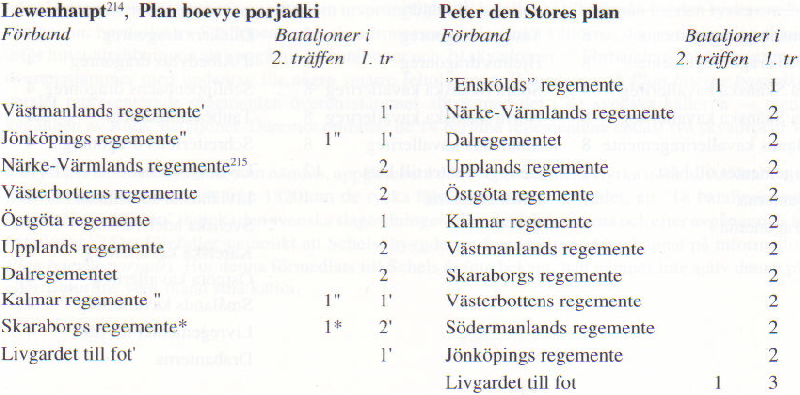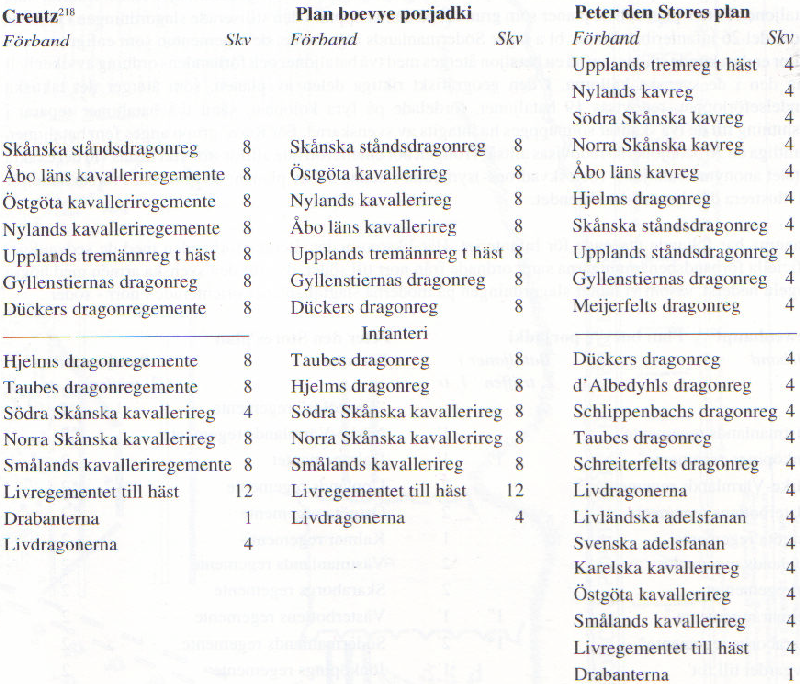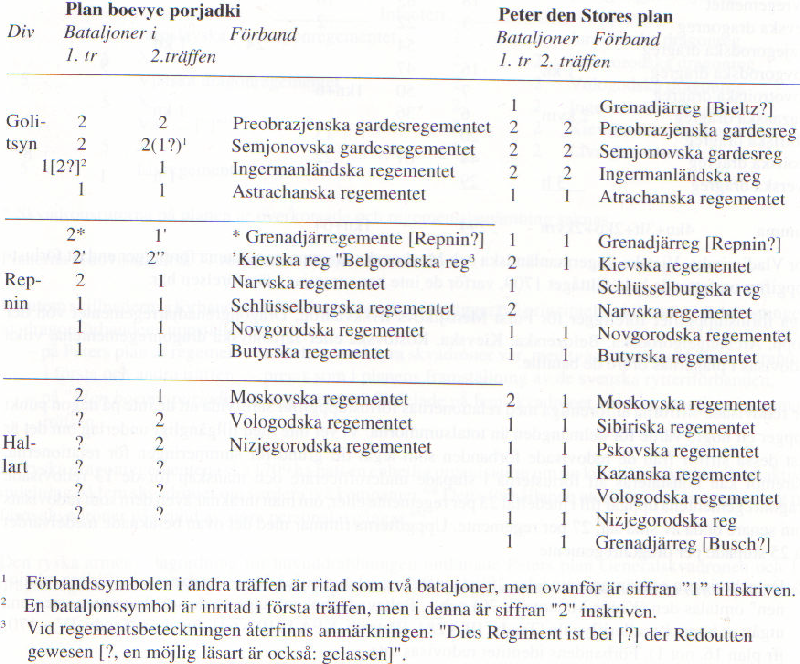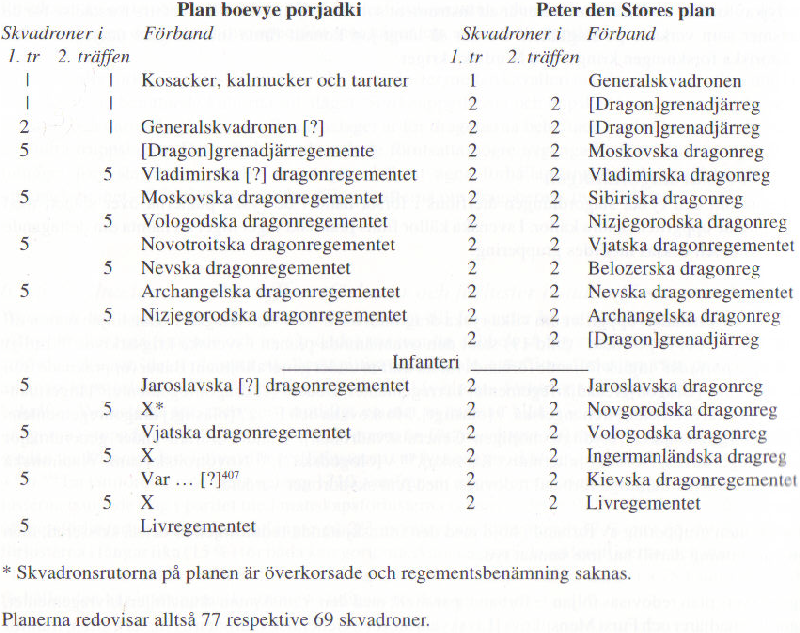|
What the Sources Say about the Armies'
Order of Battles at Poltava
The sources give conflicting
information regarding which order the various regiments lined up for battle
at Poltava. There are two sources from the Russian side: Peter the
Great's plan and Plan boevye porjadki. The first is the official
Russian description of the battle of Poltava. Its information on the Russian
regiments seems credible but it greatly exaggerates the number of Swedish
regiments in an effort to magnify the Russian victory. The second OOB was
probably written down first and ordered by major general Hallart (who
commanded one of three Russian infantry divisions). Apart from a somewhat
more honest description of the strength of the Swedish army it also
distinguish itself from Peter the Great's plan by having the Russian dragoon
regiments deployed in five squadrons instead of four. Normally a Russian
dragoon regiment consisted of ten companies paired together to form five
squadrons, but it is possible that the number of squadrons was reduced
because of a shortage of men or horses at the time of the battle.
On the Swedish side we have the
general Lewenhaupt and major general Creutz who in Russian captivity wrote
down the Swedish order of battle for the infantry respectively the cavalry.
Lewenhaupt's OOB however only record the planned order of battle which
include the six battalions commanded by Roos, which were separated from the
main force during the redoubt battle, and not the actual force of just 12
battalions which participated in the main battle.
The tables below come from
Bertil Wennerholm's book "Emporterade troféer" (2000), pages 61, 64. 84 and
86.
Swedish Infantry

Swedish Cavalry

Russian Infantry

Russian Cavalry

Return to
the opposing armies' order
of battles at Poltava. Or read about Russian uniforms
at Poltava and
Swedish uniforms at Poltava. |

